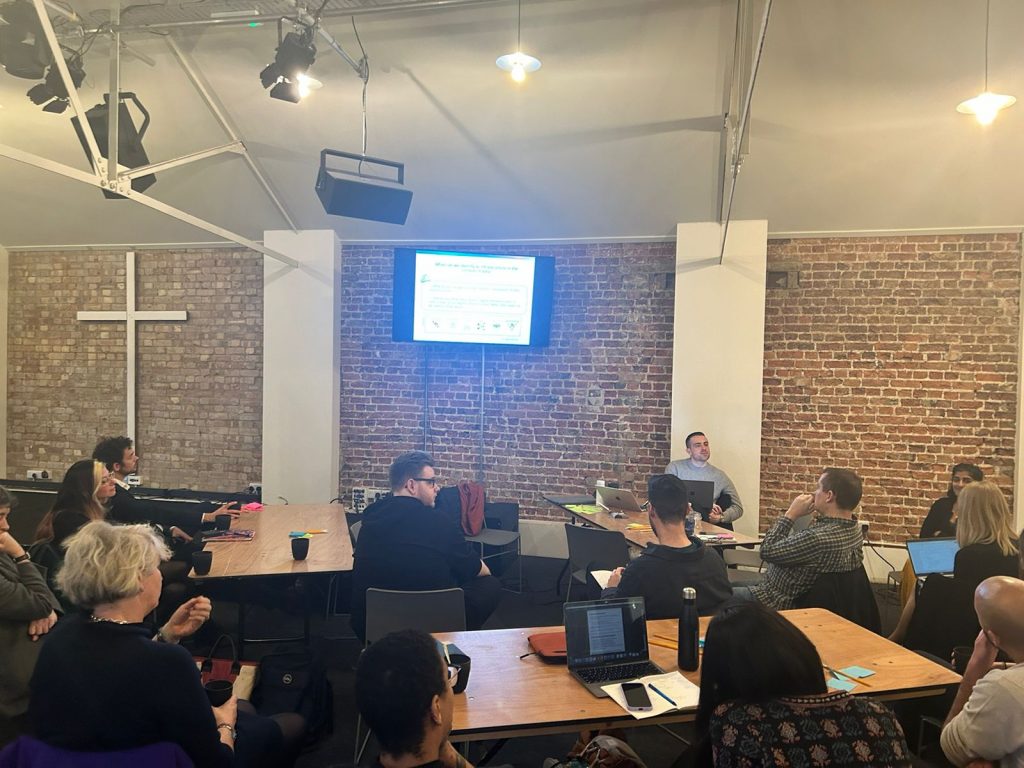
Photo by Marc-Olivier Jodoin on Unsplash
Introducing Aapti’s New Project
Data has become a fundamental resource in modern society, powering decision-making for everything from guiding business strategy to informing public policy. The mushrooming of ‘smart’ initiatives across sectors points to the new normal of using data in conjunction with infrastructure (either existing or new purpose-built) to develop environments that are more efficient and responsive. The embedding of digital platforms and tools in most aspects of life has contributed to data having the power to direct and refine the performance of essential societal functions. Given this centrality of data, in the creation and management of everyday infrastructure and the development of society as a whole, there is a necessity for the reconceptualization of data from an asset to that of infrastructure.
Extracting insights and value from data requires several enabling tools and elements, such as computing hardware and standards. While these systems are important in the data value chain, they play a role in the larger digital ecosystem and have a standing outside of their role tied to data. While there exist regulations for these systems, our preliminary research has shown that these governance priorities can often be blinkered, with gaps in governance that miss out on the harms and opportunities stemming from these systems. For instance, while there has been a focus on regulating the cloud infrastructure market from the lens of privacy and security, there has been a lack of focus on deepening market oligopolies and threats to environmental sustainability.
The increasing reliance of society upon prevailing digital systems and the magnitude of their impact on our daily lives necessitates an adaptation to our governance approach to these systems. We believe that this should be done in a manner that accounts for the need for reflexive creation within digital ecologies as well as modularity for their constituent elements. To that end, we believe that formulations of ‘infrastructure’ thinking for data and digital systems present promising avenues. Terminology around ‘infrastructure’ is not new in the digital ecosystem. However, it is a growing yet scattered notion.
To explore this opportunity, Aapti Institute has undertaken a study on “Landscaping Infrastructures for Data”, supported by Omidyar Network. Our research aims to investigate the notion of infrastructure, drawing from traditional socio-legal understandings of infrastructure, and the systems, impact or structure that make it so and build on this to develop a holistic governance approach for key elements of the digital ecosystem that can support diverse regulatory priorities.
Workshop on Landscaping Infrastructures for Data
In connection with this, we conducted a 90-minute in-person workshop in London on the 25th of January 2024, to bring together academics, practitioners, researchers, and civil society organisations for a closed-door discussion on a few key themes:
- Understanding the variation in thinking and approaches to ‘data infrastructures’, and ‘data as infrastructure’
- Understanding the different ways that data infrastructures are governed and the outcomes they are governed towards
- Identifying potential avenues for governance principles drawing from an infrastructure framing
We are very grateful to the diverse group of participants who joined us at the workshop. The discussion was vibrant and insightful – validating some of our thinking while posing important questions to us.


Key Insights
Set out below are some of the key insights that emerged from the workshop:
- Conceptions of infrastructure differ in different practices
The term “infrastructure” has different meanings and ways of being viewed based on the lens that is adopted. For example, adopting an economic lens to infrastructure brings in notions of positive externalities, public goods, club goods, centralised costs, etc. However, approaching infrastructure from a social lens has different connotations including the role of communities in the building and management of infrastructure. - Study the compounding value of framing data as infrastructure alongside infrastructures for data
An infrastructure framing lends itself to the data context in different ways. Understanding ‘data as infrastructure’ allows us to imagine datasets with inherent infrastructural properties like persistence and being facilitative of wider production. As a next step, considering ‘data infrastructures’ beyond the dataset enables us to study and govern components such as standards, policies, hardware, and communities that are essential for the use of data with equal priority and depth. - Adopt a typology of governance that flows from the orientation of data infrastructures
By examining data infrastructures for their orientation, both the intended orientation as well as the actual orientation, we can identify the intended outcomes for when they were built, the outcomes from how they actually function and lead inquiries into what may have been deprioritised. Doing so can help create a clear understanding of the gaps in governance and what is needed to fix them. - Infrastructure might only be one metaphor for the digital ecosystem
The infrastructure framing might just be one possible metaphor for the digital ecosystem, with other metaphors such as ecologies, architectures and value chains also seeing use and merit. In applying the notions of infrastructure to the digital ecosystem, it is useful to keep in mind other terminologies that represent/resonate with properties of data and digital systems and might be more accurate in certain contexts. - The role of communities must not be ignored/go unrepresented
It is imperative to not lose sight of communities in the discussion around infrastructure and governance. Infrastructure framing could possibly lead to State-centric conversations, ignoring community voices. There is a need to have active and widespread participation in the governance of digital systems, and community and social infrastructures should not be left out of this conversation. - Exercising caution in applying the infrastructure framing
The infrastructure framing, while beneficial, also comes with certain limitations and baggage. In certain jurisdictions, traditional infrastructure is underfunded, and applying the infrastructure terminology to digital systems could invite similar issues. Applying the conception of infrastructure could also lead to treating digital systems in the same vein as physical infrastructure when there has been enough research to show that the digital space brings with it unique challenges not faced in physical realms.
Project Next Steps
We will continue our research on this emerging field of study with revisions based on our learnings from the workshop. We are curious and eager to engage with experts from various stakeholder groups who are interested in this work – to share learnings, exchange insights and co-create avenues for solutions. If you, or anyone you know, works on studying infrastructures in the digital context, please reach out at [email protected].


